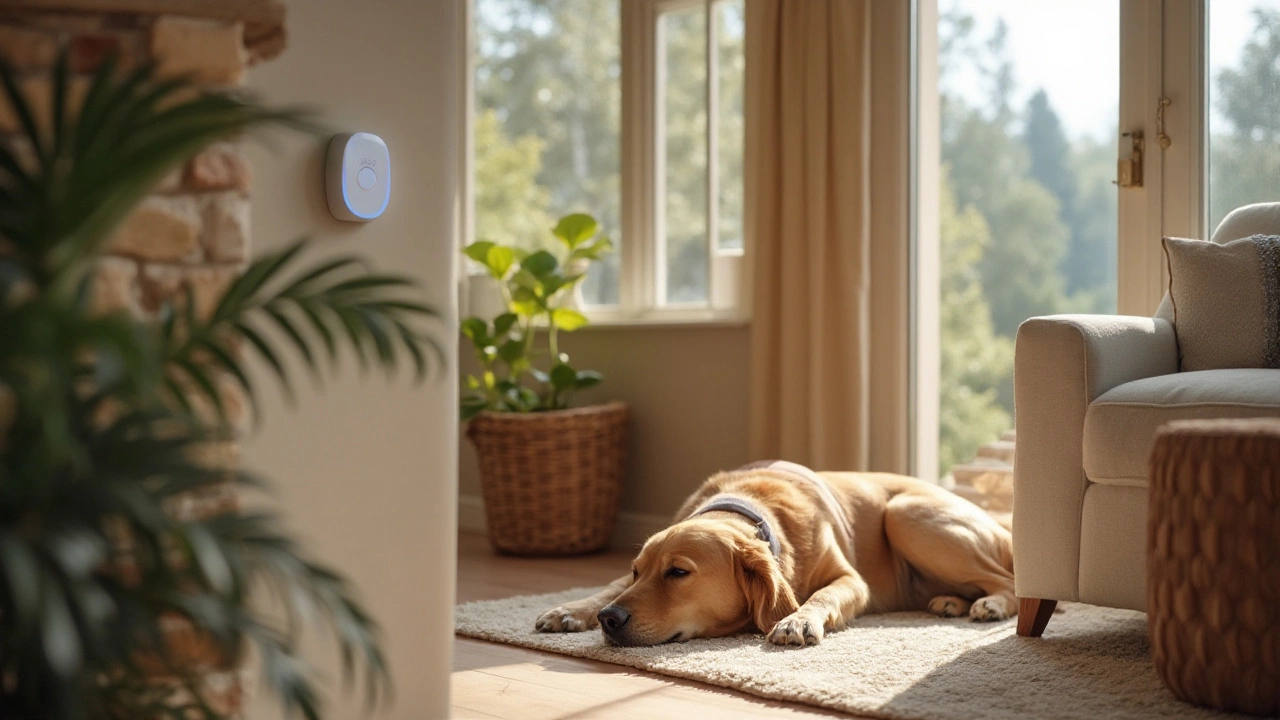Pets add joy, but they can also trip motion sensors, chew wires, or wander into blind spots. The good news is you don’t have to choose between a secure house and a happy animal. Below are easy steps you can take right now to make your security system work for you and your furry companions.
Many modern sensors let you set a “pet immunity” range. This tells the device to ignore movements under a certain height – usually around 12‑18 inches. Brands like SimpliSafe and Ring let you adjust the detection height in the app. If you have a large dog, set the range a little higher so the sensor still catches a human but not a cat hopping on the couch.
When you buy new sensors, look for terms like “pet‑friendly,” “adjustable height,” or “z‑zone.” These features cost a little more but save you from endless notifications about a whiskered intruder.
Pets love to crawl into corners, behind plants, or under furniture. If a camera can’t see them, you’ll get blind spots in your footage. Mount cameras high enough (around 7‑8 feet) so animals can’t easily block the view, and angle them to cover entryways and high‑traffic zones.
For indoor cameras, choose models with a wide field of view and night‑vision LEDs that don’t disturb pets. Some cameras even have a “pet mode” that reduces sensitivity after dark, so a sleeping cat won’t trigger a constant alarm.
Chewing is a common habit for curious dogs and kittens. Protect power cords and wiring with PVC conduit or split‑loom tubing. These cheap sleeves make it hard for teeth to reach the metal inside.
If you have a wireless doorbell or sensor, mount it out of reach – on a wall at least a foot above the floor. This simple tweak can prevent costly damage and keep the system running smoothly.
Most apps let you customize alert tones and frequencies. Set a gentle chime for pet‑related motion and a louder alarm for real intrusions. You can also enable “quiet mode” at night so a prowling cat won’t wake the whole house.
Testing the system with your pet around helps you fine‑tune the settings. Walk past the sensor with your dog on a leash and watch the app – if it alerts, raise the detection height a bit.
Pets can learn where not to go with a little guidance. Use treats to reward a cat that stays away from a motion sensor’s field, or guide a dog to a designated “safe zone” when you arm the system. Consistency is key; a few minutes each day builds a habit.
Remember, a well‑trained pet reduces false alarms and makes you feel more relaxed when you’re away.
By choosing pet‑friendly hardware, positioning devices smartly, and tweaking alerts, you get a security system that protects both your home and your animal companions. Browse our articles for deeper dives on specific products, from camera night vision to Bluetooth doorbells, and keep your space safe without sacrificing the comfort of your four‑legged friends.

As modern technology becomes an integral part of home security, pet owners often wonder about the impact of these systems on their animals. This article examines the suitability of Ring alarms for households with pets. How do they work around active pets, and are there specific features to look for? We also discuss some tips to ensure your pets stay comfortable and safe while your home remains secure.